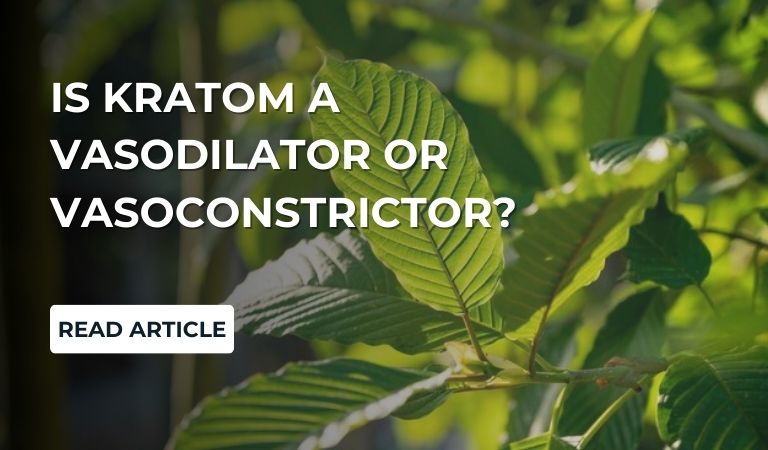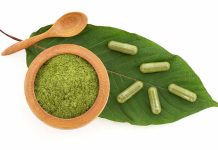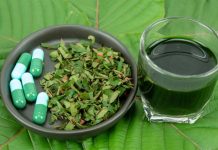Kratom has taken the world by storm with its alleged pain-relieving, energizing, and mood-elevating properties. Some also use Kratom to sleep comfortably at night and de-stress. But, like any other drug or medicine, Kratom might affect the blood pressure of regular consumers.
However, how Kratom affects blood pressure and cardiovascular activity still remains a question unanswered. Therefore, despite its numerous potential benefits, people still feel a bit reluctant with the thought of using Kratom, primarily due to the limited information available online about Kratom’s prolonged use.
But fret not! Today, in this article, we will answer the very question that continues to remain an unsolved puzzle:
“Is Kratom a vasdilator or vasconstrictor?”
What Is Kratom?
With Kratom’s growing popularity, it is hard not to hear anyone saying something good about Kratom’s effects.
However, for those unfamiliar with what Kratom actually is, these widespread claims can make it challenging to simply take everyone’s word for it at face value.
And that totally makes sense.
So, what is Kratom?
Kratom, also known as Mitragyna speciosa, is a tree native to Southeast Asia, mainly Thailand, Indonesia, Malaysia, and Myanmar. For centuries, it has been used as a natural relaxant, pain reliever, and mood and energy booster — all in its pure leaf form. Historically, Kratom’s leaves have also been used for chewing, smoking, and brewing tea to seek the aforementioned benefits.
Needless to say, Kratom has always been a natural or herbal pain reliever. However, due to its alkaloid composition and sedative effects, it was labeled as a controversial ingredient despite its soothing properties.
But the perception has changed now. Since most states have announced that Kratom is legal to consume, most people are turning to Kratom for its alleged benefits — to seek a natural alternative to medicines.
Benefits of Kratom
What gives Kratom the ability to affect people is its composition of alkaloids. The two most prominent alkaloids, mitragynine, and 7-hydroxy mitragynine, are the reason behind Kratom’s growing demand in the market. Their effects include:
- Analgesic properties (pain and discomfort reliever
- Mood elevating properties
- Stimulation and enhanced focus
- Stress-relieving properties
- Sedative effect and improved sleep
- Calming and soothing properties
However, it is important to note that these alkaloids can affect Kratom users differently. The experience of one Kratom user may vary significantly from another’s. Similarly, the dosage required to feel Kratom’s effects is unique for some. For instance, a teaspoon of Kratom powder might be a bit too strong for one; however, the very same amount can be too little for another.
How Does Kratom Affect Your Blood Pressure?
To determine whether Kratom acts as a vasodilator or vasoconstrictor, it is crucial to understand Kratom’s effect on users’ blood pressure first.
And to understand Kratom’s impact on blood pressure, we need to first start with the different effects of Kratom’s alkaloid composition.
It is not an unknown fact that the alkaloids in Kratom have various physiological effects on individuals. These changes include the expansion of circulatory strain, which is somewhat similar to the opiates.
However, drastic physiological changes, such as the rise in blood pressure (in some reported cases), sedative effects, pain relief, expansion of circulatory strain, etc, are only experienced among users when Kratom is taken in large amounts.
At low or moderate doses, Kratom only gives stimulant effects. Users have also reported increased focus and concentration, mood and energy enhancement, getting more talkative, and an overall heightened feeling of physical alertness.
The bottom line: At higher doses, users experience pain relief and euphoric or sedative effects, with a rise in blood pressure levels reported in some users. At lower or moderate doses, physical alertness and clarity are reported.
Kratom: Is It A Vasodilator Or Vasoconstrictor?
To answer this question, let’s first learn the difference between a vasodilator and a vasoconstrictor.
What Is A Vasodilator?
A vasodilator is a compound or substance that dilates or expands the blood vessels after consumption. This expansion occurs as the walls of blood vessels relax, allowing more blood to flow through the dilated blood vessels easily, as a result, lowering the blood pressure.
What Is A Vasoconstrictor?
On the other hand, a vasoconstrictor is a substance that narrows the walls of blood vessels. Consequently, the muscles of the blood vessels contract, making them smaller and thinner. The narrow passage then restricts the blood flow within the vessels, potentially raising blood pressure levels.
So, how does Kratom act? As a vasodilator or vasoconstrictor?
Given that the most popular effect of Kratom is muscle, body, and mind relaxation, it is now easier to deduce its role.
These relaxing properties suggest that Kratom functions primarily as a vasodilator.
A few alkaloids in Kratom, like Mitraphylline, help the muscles to relax after they come in contact with the brain. This also results in the dilation of the walls of blood vessels, allowing a seamless flow of blood within them. Therefore, lowering the blood pressure.
Kratom Alkaloid With Vasodilator Properties
Now knowing that Kratom is, in fact, a vasodilator, this naturally leads us to the next big question:
Which Kratom Alkaloids are Vasodilators?
Well, there are to name a few:
- Mitragynine: The most abundant alkaloid and the best muscle relaxant with analgesic properties
- Paynanthine: Second most abundant alkaloid – promotes muscle relaxation
- Mitraphylline: Relaxes muscles and mood and is also a well-known anti-amnesia.
- Speciogynine: Alleviates stress and promotes muscle relaxation
- Rhynchophylline: Another muscle relaxant with anti-inflammatory properties.
- Ajmalicine (Raubasine): Smooth muscle relaxant
The Final Verdict
Kratom is a vasodilator.
It is one of the best natural muscle relaxants, resulting in the dilation of blood vessels, more blood flow, and decreased blood pressure.
However, Kratom can potentially increase blood pressure in some cases.
A 2017 case study from the National Library of Medicine reported that the higher dosage of Kratom led to a significant rise in the blood pressure of regular Kratom users.
This suggests that hypertensive patients must avoid higher doses of Kratom and settle for much smaller and moderate doses.








